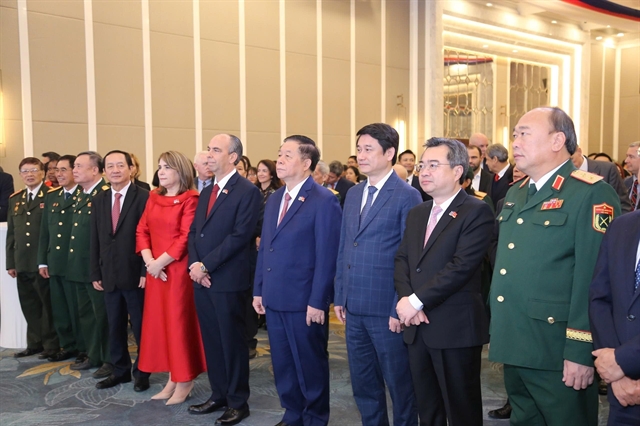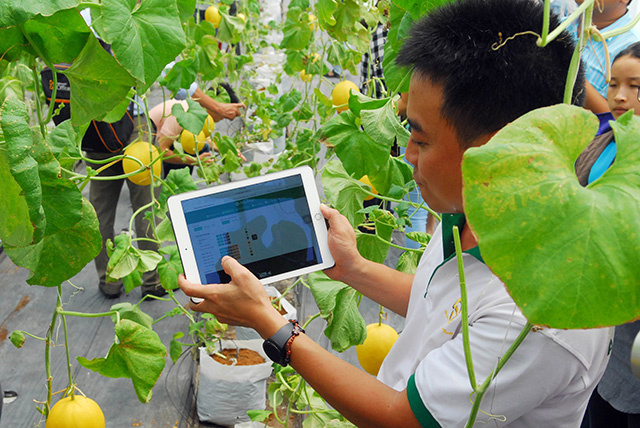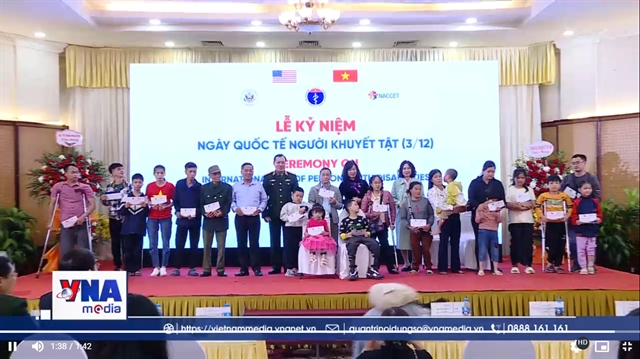 Society
Society
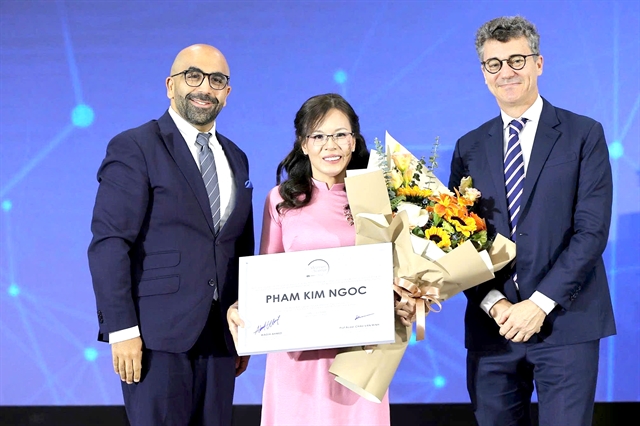
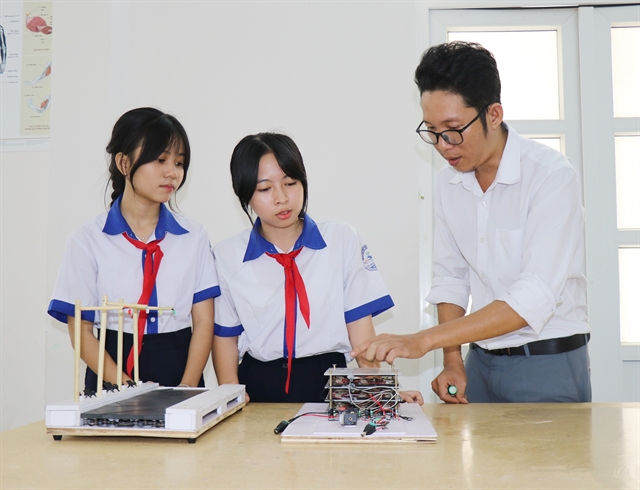 |
| Phạm Thị Thuỳ Trinh (left) and Nguyễn Thị Thanh Thuý with teacher Lê Minh Phương check the project model 'Generating electricity from footsteps'. — VNA/VNS Photo Nguyễn Thành |
NINH THUẬN — With a passion for science, two ninth grade girls in Ninh Thuận southern province have successfully recreated the model 'Generating electricity from footsteps' with newer and cheaper materials.
Phạm Thị Thuỳ Trinh and Nguyễn Thị Thanh Thuý, students at Võ Nguyên Giáp Primary and Junior Secondary School in Đông Hải Ward, Phan Rang-Tháp Chàm City, have won first prize at the provincial science and technology competition for students in the 2024-2025 school year.
The competition was organised by the Ninh Thuận Department of Education and Training.
The generated energy can be used to power small devices, as an alternative to using energy from traditional sources such as grid electricity or chemical batteries.
In addition, the research contributes to raising public awareness of renewable energy and environmental protection, encouraging the use of clean and sustainable energy sources.
Ideas
Thuý said that while watching people walking to school every day, she noticed that people perform many movements, including steps, but most of the energy generated from these activities is wasted.
Desiring to exploit this kinetic energy, using it to power small devices, helping to save energy, they came up with an idea and consulted with Lê Minh Phương, a teacher of the school's natural sciences group, for further advice.
Under the enthusiastic guidance of teacher Phương, the two students embarked on technical research, surveying technology, materials and the environment.
After three months working on the project, Trinh and Thuý successfully created two models, a mini park and a floor tile, both illustrating the potential of collecting energy from footsteps.
Each model was built at low cost, easy to deploy and suitable for real-life conditions.
Trinh said that the model 'Generating electricity from footsteps' is based on the principle of piezoelectric vibration sensors, which convert mechanical energy into electrical energy.
The model includes piezoelectric floor panels made of many ceramic speaker discs connected in series or in parallel to optimise the energy harvesting process.
The rectification and power storage system includes a rectifier circuit to convert the alternating current from the sensor into direct current, then store it in a rechargeable battery or capacitor.
Energy consuming devices and power generating systems will be tested with LED lights, sensors or battery chargers to evaluate performance.
In terms of operating principle, when there is an impact force, footstep or other pressure, the ceramic speaker sensor will generate a voltage. The alternating current from the sensor will be converted into direct current by the rectifier circuit.
According to the research team, the energy conversion efficiency obtained from footsteps can be superior to that of solar cells, especially in unfavourable weather conditions.
For comparison, a 5V battery with a current of 50mA (the same size as the floor panel) needs to be charged continuously for four days to reach the fully charged level of a phone battery.
However, collecting energy from footsteps by stepping on bricks installed with energy harvesting devices, only requires 200 runners, each person stepping on the brick five times to create 1,000 units of energy.
With 500 such bricks and a total of 500,000 steps, enough energy can be created to fully charge five phones in just three or four hours.
Towards national level
Teacher Phương said that the novel aspect of the project is the use of ceramic speaker material to convert mechanical energy into electrical energy, which is an innovative approach.
The method is not widely popular, and at the same time takes advantage of good electromechanical properties, low starting costs and materials that can be easily produced.
Not only does the project create energy from footsteps, but it also designs an energy storage system in batteries and capacitors, ensuring long-term and effective use for small devices.
The model is designed to maximise the energy collected from footsteps, suitable for areas with high traffic such as schools, shopping centres, parks and pedestrian streets.
The footstep energy-collecting floor panel can be flexibly installed in various locations, with a simple operating mechanism.
Even when installed underground, the floor panel can harness energy from vibrations caused by vehicles or music.
Thanks to the integrated spring system, the floor will automatically vibrate and generate electricity, turning daily movements into a useful energy source.
Lê Ngọc Diệp, deputy principal of the school, highly appreciates the creative ideas of Trinh and Thuý.
The project not only demonstrates the ability to apply learned knowledge but is also the result of a process of searching, researching documents.
“It expresses the students’ efforts under teacher Phương’s dedicated guidance,” she said.
The experience gained from the research and model making process is a valuable asset for Trinh and Thuý.
After their success at the provincial science and technology competition, they continue to spend time improving the design and integrating more features to complete the project, aiming for the National Science and Technology Competition for students in the 2024-2025 school year, which will be held in HCM City next month. — VNS

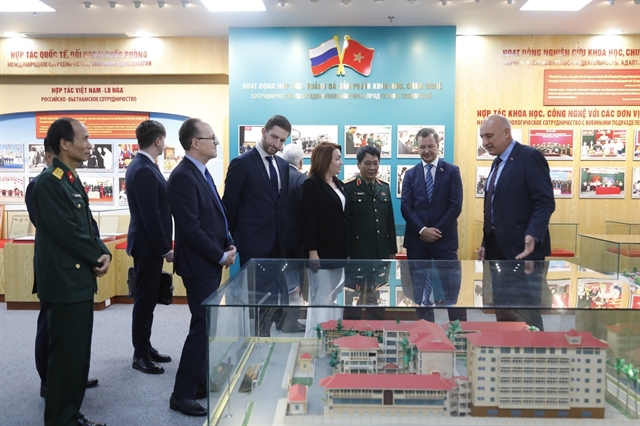
.jpg)
